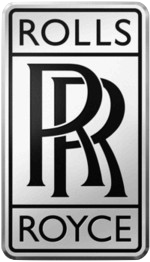
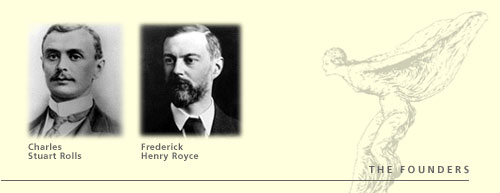

| Charles Rolls Charles Rolls studied mechanical engineering at Cambridge. The first undergraduate to own a car, he soon began racing. To fund his passion he set up a dealership, selling mostly foreign cars. His search for a supplier of reliable English cars led him to his introduction to Henry Royce. The first aviator to complete a double- crossing of the English Channel, he was killed in a crash at an air show in July 1910. | 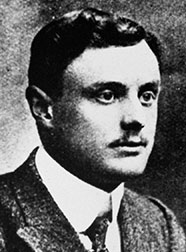 |
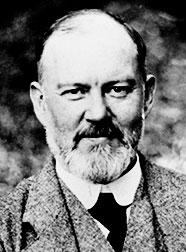 |
Sir Henry Royce Known for his attention to detail and pursuit of perfection, Henry Royce registered his first patent (the bayonet lamp socket) in 1887. His company produced dynamos, electrical motors and cranes. Dissatisfied with his Decauville, Royce decided to improve on it and turned his attention to building the best cars in the world. By 1903 he had designed and built his first engine. His first prototypes took to the road in 1904. |
| The beginning Rolls-Royce Limited was created over a famous lunch in May 1904. Henry Royce, a successful engineer , struck a deal with Charles Rolls, owner of one of the first car dealerships. The rest is history. The ensuing series of two, three, four and six cylinder cars broke the mould for engineering and craftmanship. The Silver Ghost, launced in 1907, was a car of ledgendary smoothness that completed a 14,371 mile virtually non- stop run, creating the best car in the world ledgend. |
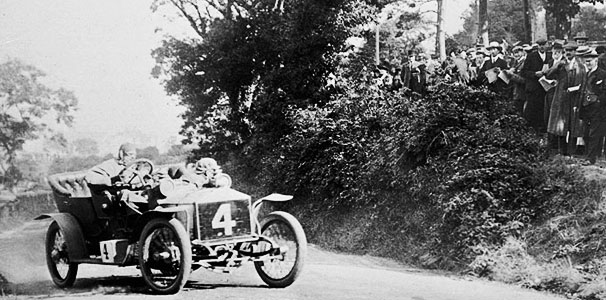 |
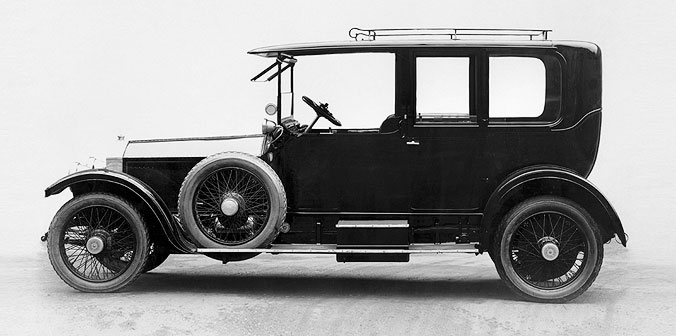 |
Silver Ghost Introduced in 1907, the 40/50 HP or Silver Ghost remained in production untol 1925. Originally powered by a 7,036cc six-cylinder engine, this was increased to 7,428cc in 1909. Best-known body styles include the Barker Tourer and the Barker Enclosed Cabriolet. First built in Royce's factory in Manchester, following its success the company moved to a custom-built factory in Darby. |
| 1920s The aptly named Rolls-Royce 20 HP, also known as the 'baby' Rolls-Royce, was launced in 1922. Aimed toward owner-drivers it became popular with the burgeoning professional middle classes of doctors, solocitors and businessmen. Its engine was a straight six-cylinder with a capacity of 3,127cc and had a maximum speed of 62 mph. |
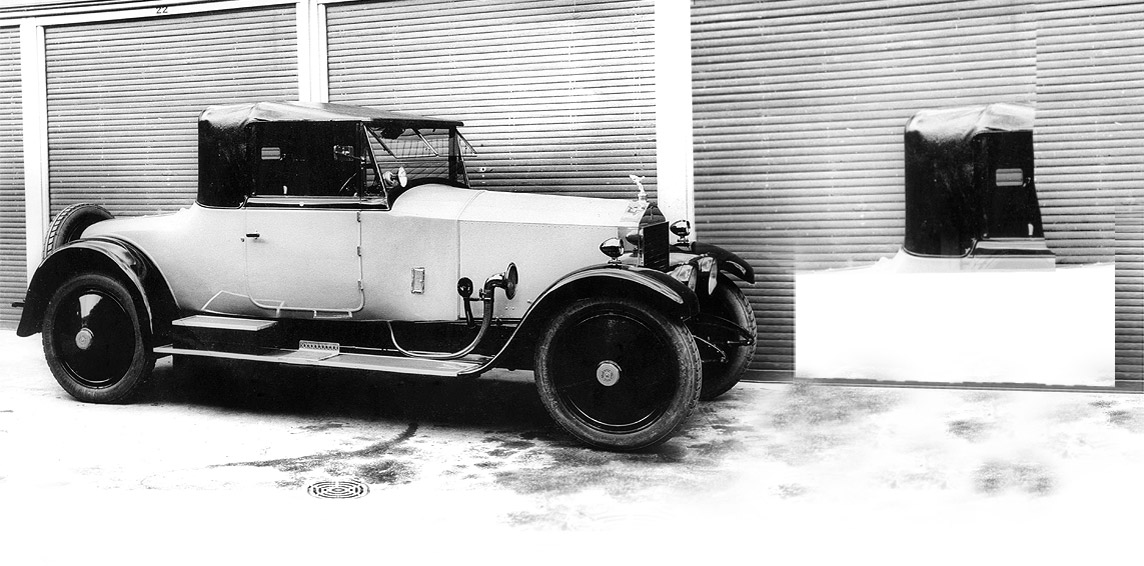 |
In 1925 the Silver Ghost was replaced by the 'New Phantom', which was later known as Phantom 1. The last batch of Silver Ghosts was built in 1927 as armoured car chassis for the Russian Trade Delegation ARCOS. The Phantom was built both in the UK and in a new factory in Springfield, Massachucetts. |
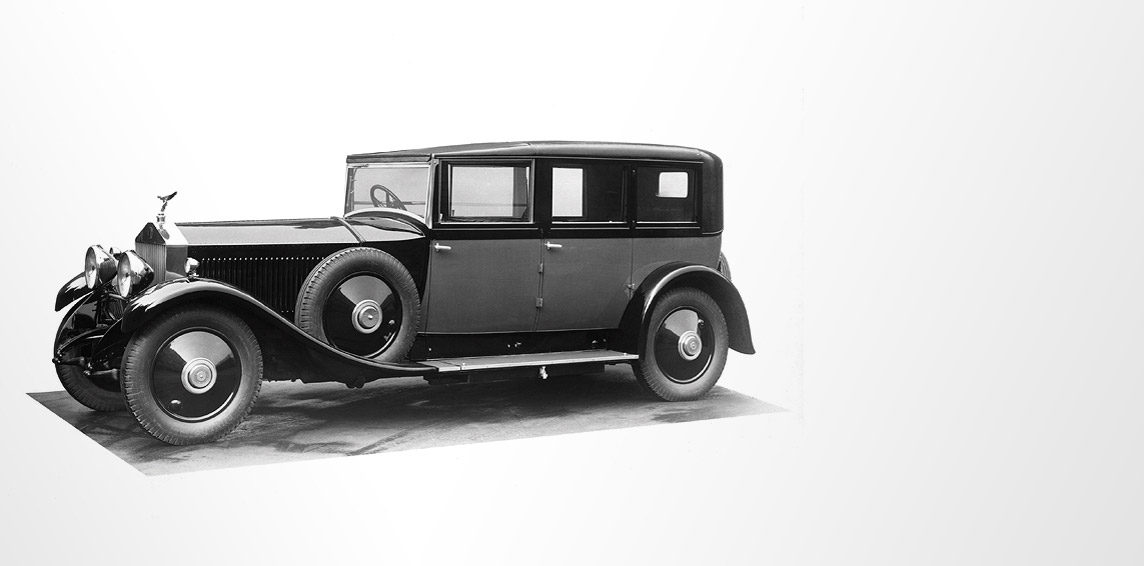 |
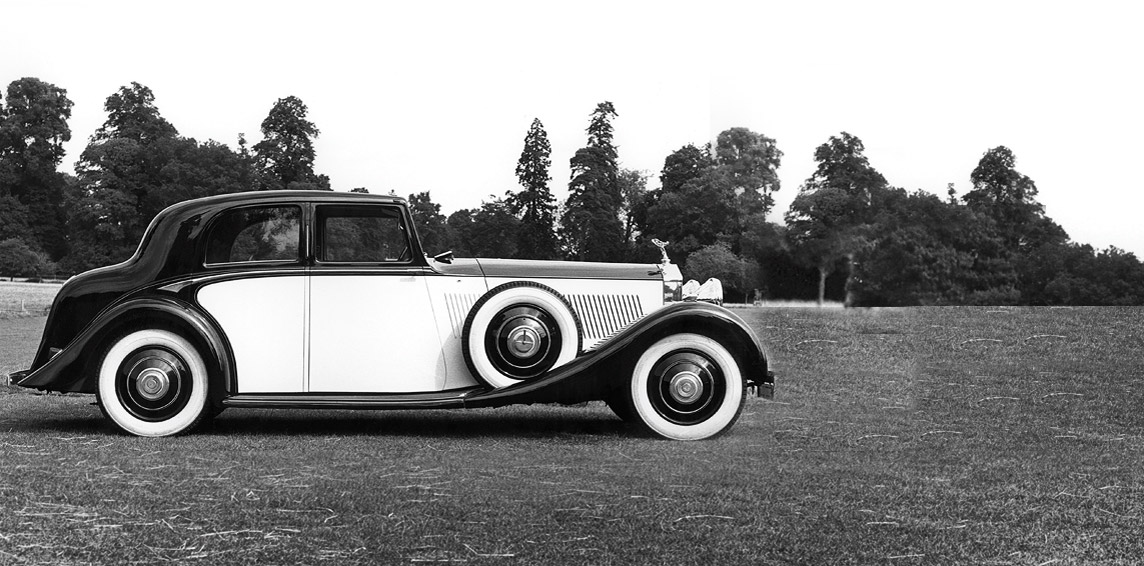 |
1930s The Phantom II had a much-improved chassis, which made it the ideal choice for those who thought nothing of finishing work early on a Friday and heading down to the South of France for the weekend. Better-known body styles were the Barker Close-Coupled Touring Saloon, Park Ward Continental Coupe, and Barker Torpedo Tourer. The Park Ward Continental would do 92.3 mph and 0-60 in 19.4 seconds. |
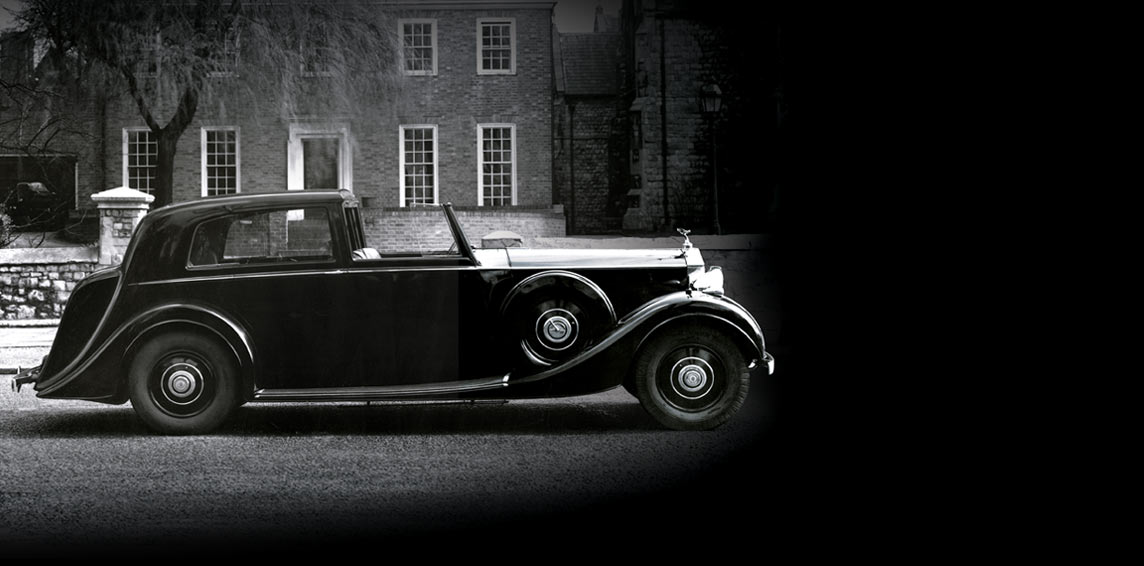 |
The Phantom III was Rolls-Royce's first V12 engined car - a 60 degree unit of 7,340cc. Better-known body styles are: Park Ward Limousine and Sedanca de Ville; Hooper Sedanca de Ville. Performance for Park Ward Limousine: 91.84 mph and 0-60 in 16.8 seconds. |
| 1940s All the Silver Wraiths had coach-built bodies. They continued in production until 1959 using the 4887cc engine to cope with increasingly heavy bodies such as H.J. Mulliner Sedanca de Ville and Hooper Touring Limousine. |
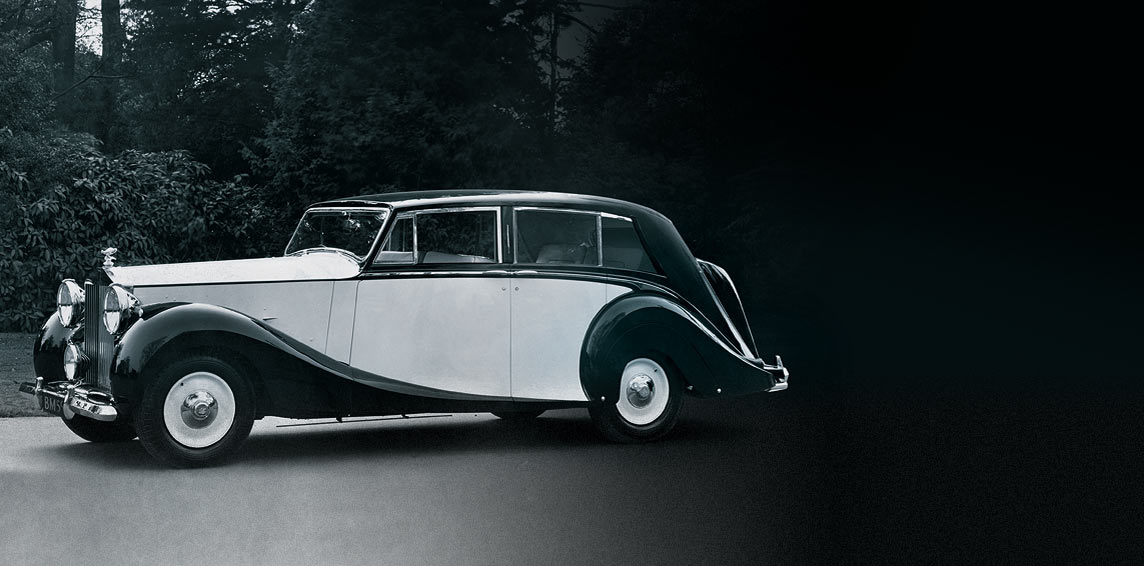 |
The Silver Dawn was the first Rolls-Royce to be sold with a standard steel body and all were exported. A few were fitted with coach-built bodies and these are very collectable. The six-cylinder in-line engine of 4,257cc was enlarged to 4.5-litres in 1951 and then to 4.9-litres in 1954. |
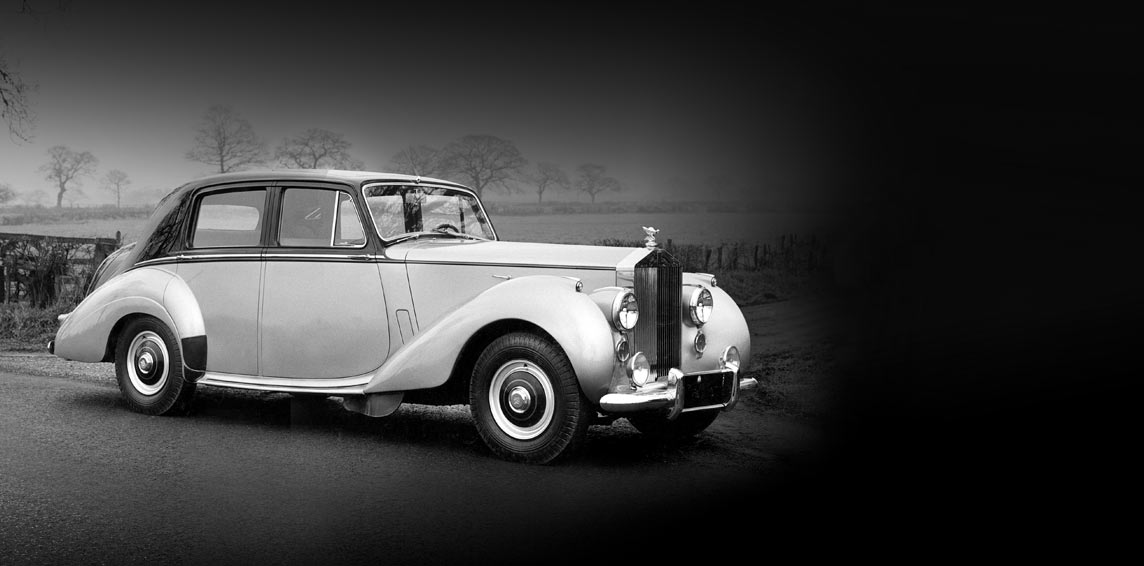 |
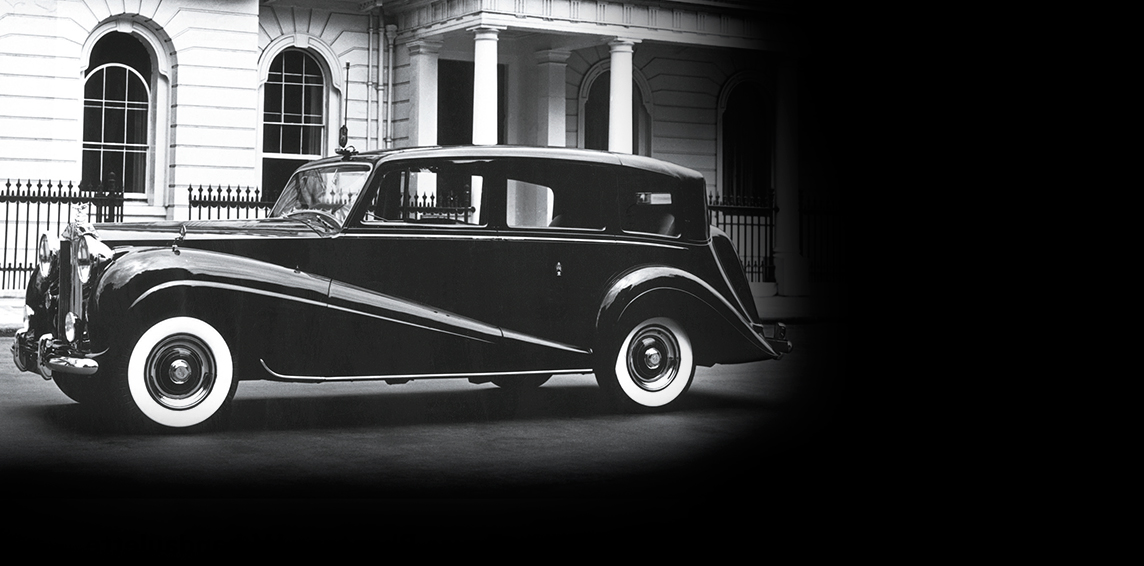 |
1950s The 1950s marked the start of a long-standing relationship between Rolls-Royce and the royal family. Replacing Daimler as the as the preferred motor car supplier to the British monarchy, HRH Princess Elizabeth took delivery of the first Phantom IV in 1950. Designed exclusively for Royalty and Heads of State, the Phantom IV is one of the rarest Rolls- Royce motor cars in the world, with only 18 ever being produced. |
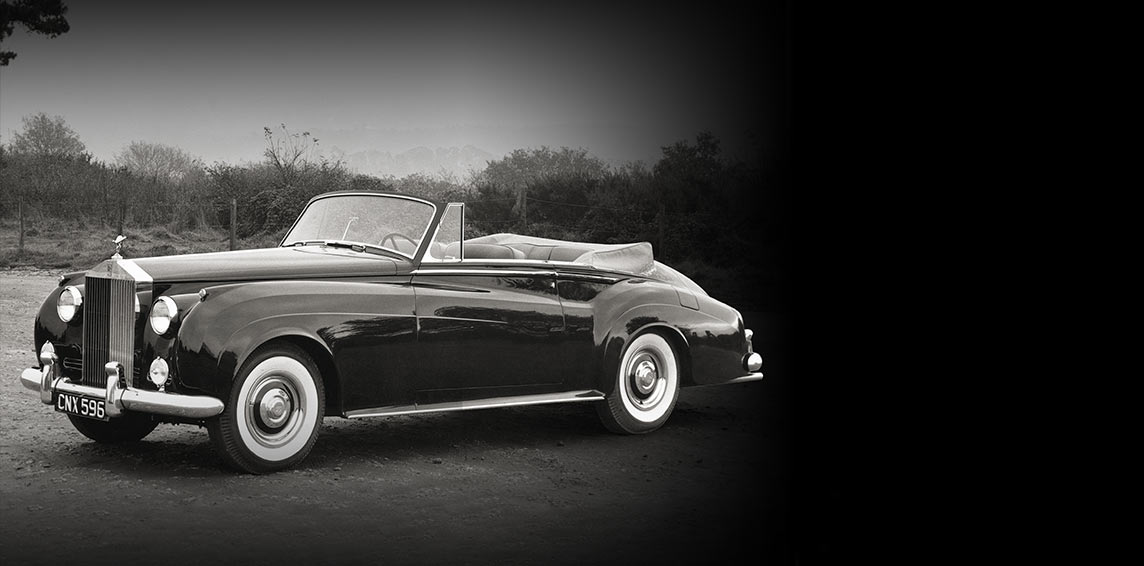 |
1955 saw the introduction of the Silver Cloud. Capable of a top speed of 106 mph, it featured the same 4,887cc engine as the Dawn and a completely new and handsome standard steel body, which was designed by J. P. Blatchley. The end of the decade saw Phantom V replace the Phantom IV. Powered by a V8 engine and featuring a coach-built body, it sold significantly greater numbers than its predecessor. |
| 1960s In 1965, a yellow Barker-bodied Phantom II shared the limelight alongside Omar Sharif, Ingrid Bergman and Rex Harrison in the movie The Yellow Rolls-Royce. In the same year John Lennon took delivery of a Phantom V. It left the factory with a plain white finish, which Lennon had repainted in matt black. Becoming bored with this new finish he had it repainted with a psychedelic design, and this Rolls-Royce is now one of the most valuable pieces of pop memorabilia. |
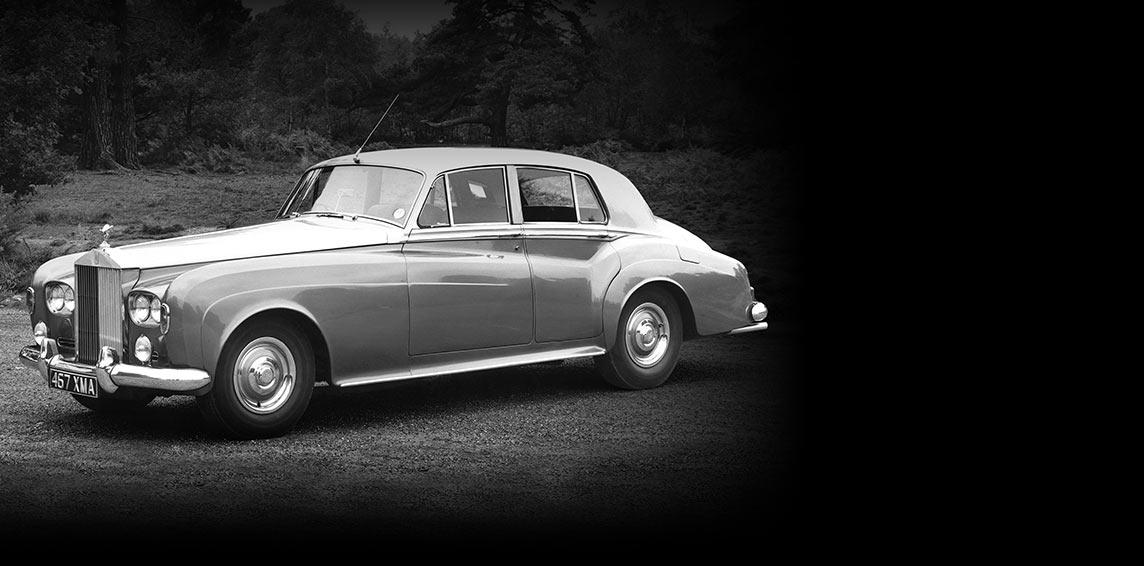 |
Introduced in 1965, the Silver Shadow was the first Rolls-Royce to feature a monocoque chassis. It had a top speed limited to 118 mph and was capable of producing 220BHP at 4,500 rpm. |
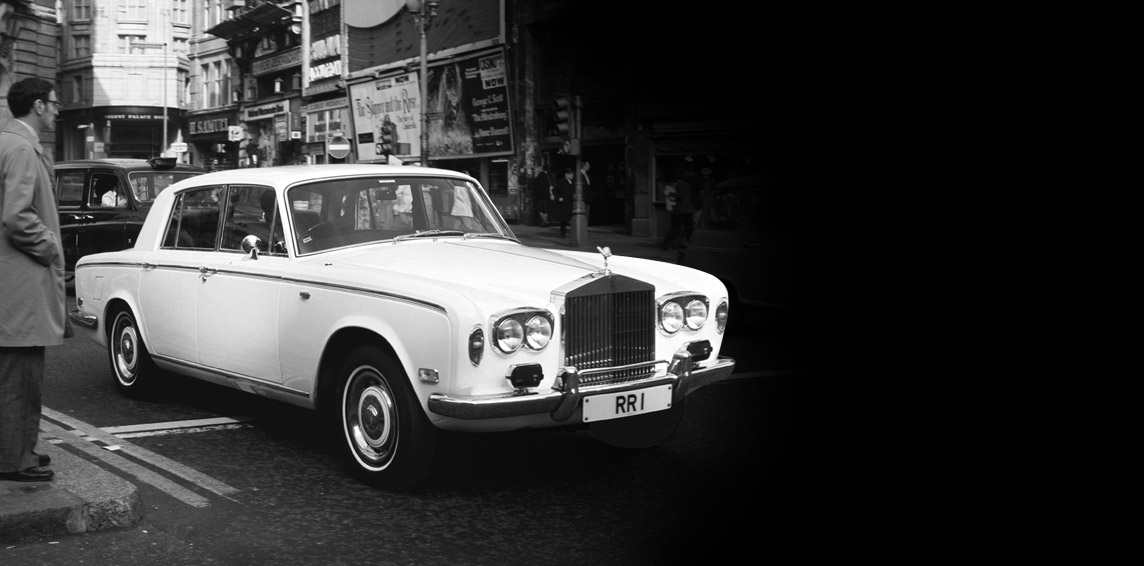 |
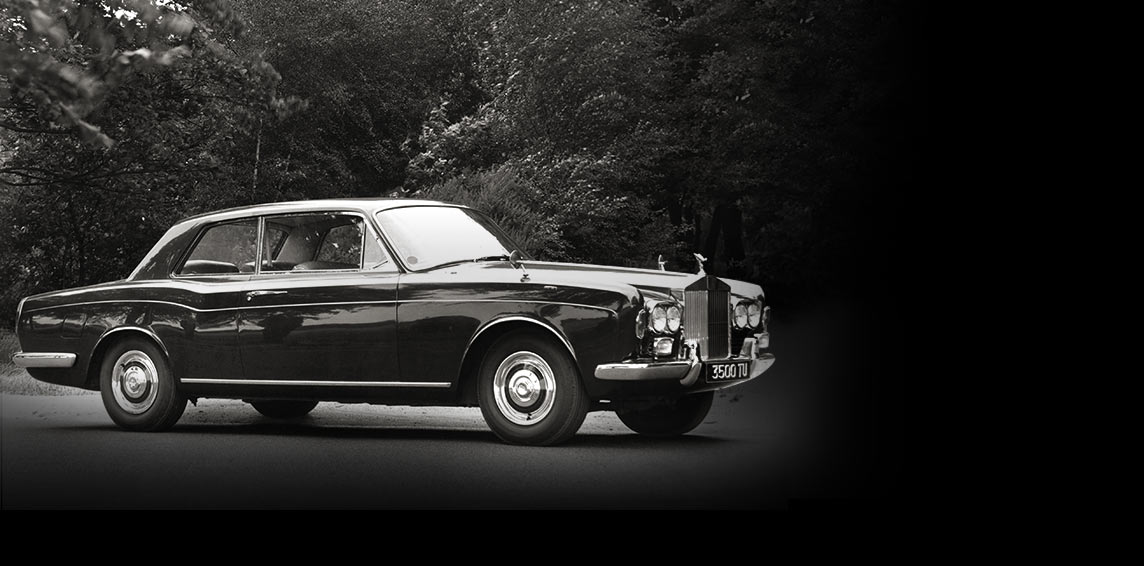 |
1970s The 1970s was a challenging decade for Rolls-Royce but, following the separation of the aerospace and motor car divisions into two separate companies, the decade saw the arrival of two exciting new models. The stylish two-door coach-built Corniche was based on the Silver Shadow, but built by hand by Mulliner Park Ward in London. The Corniche was available as either a hardtop or a convertible. |
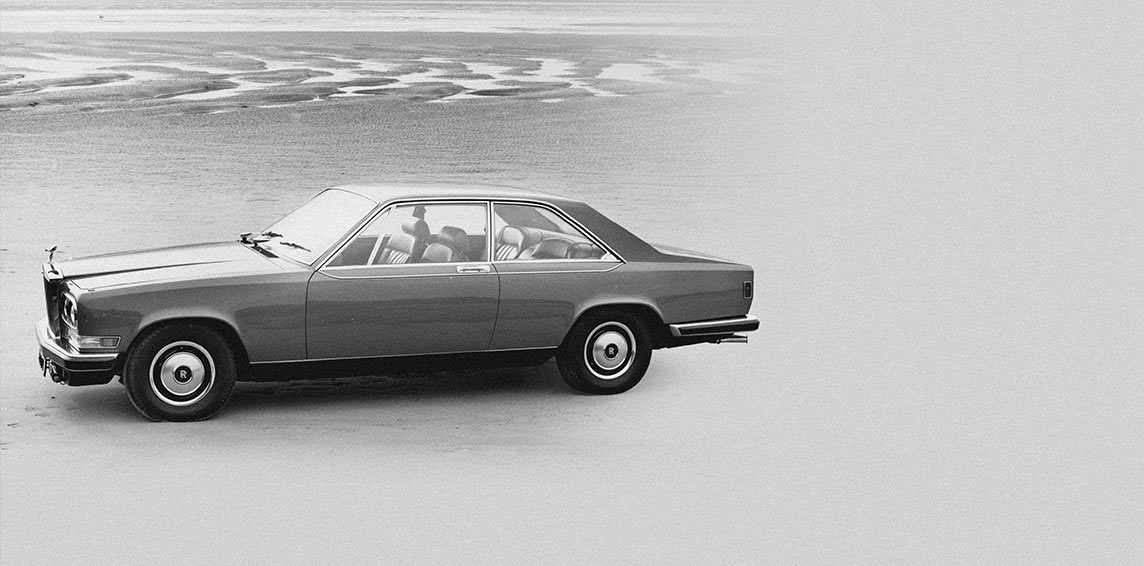 |
The Camargue was also coach-built on a Silver Shadow platform by Mulliner Park Ward, but had styling by iconic Italian coachbuilder Pininfarina. The first Rolls-Royce designed to metric dimensions, it offers advanced features including automatic split- level air conditioning. The Silver Shadow II improved on the original with exterior changes, particularly the wrap-around black bumpers and an air dam below the front, and improved handling characteristics. |
| 1980s British defence company Vickers bought Rolls-Royce Motors Limited in 1980 and continued producing Rolls-Royce and Bentley cars. Renamed Rolls-Royce Motor Cars Limited, the company was floated on the stock exchange in 1985. The Silver Spirit took the Silver Shadow floor pan as its starting point, but clothed it in a body that was more modern. The Silver Spur added four inches to its wheelbase. |
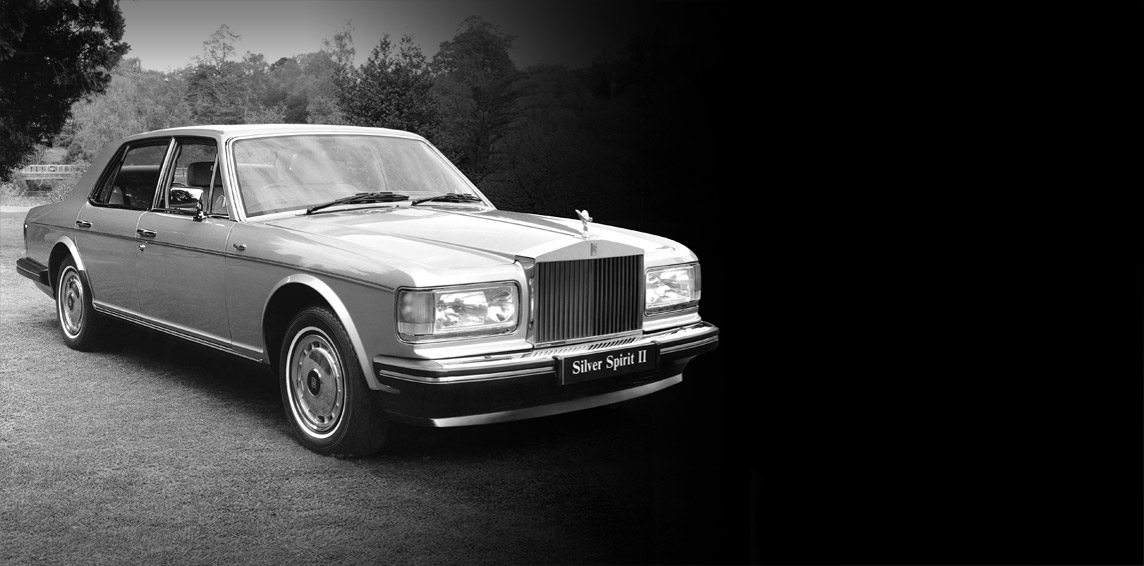 |
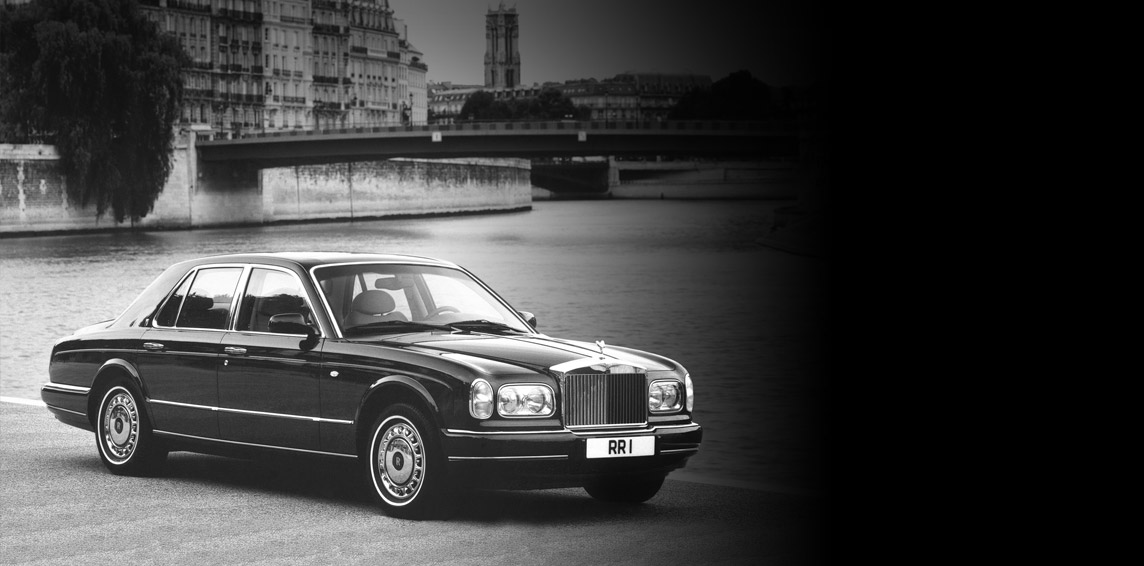 |
1990s The 1990s saw the end of production at Crewe and the start of a new chapter in the history of Rolls-Royce when the BMW Group purchased the rights to produce Rolls-Royce motor cars. The last Rolls-Royce model built at Crewe, the Silver Seraph was effectively the first all-new Rolls-Royce since the launch of the Silver Shadow more than 30 years earlier. Developed with help from BMW, it was powered by a 5.4-litre BMW V12 engine. |
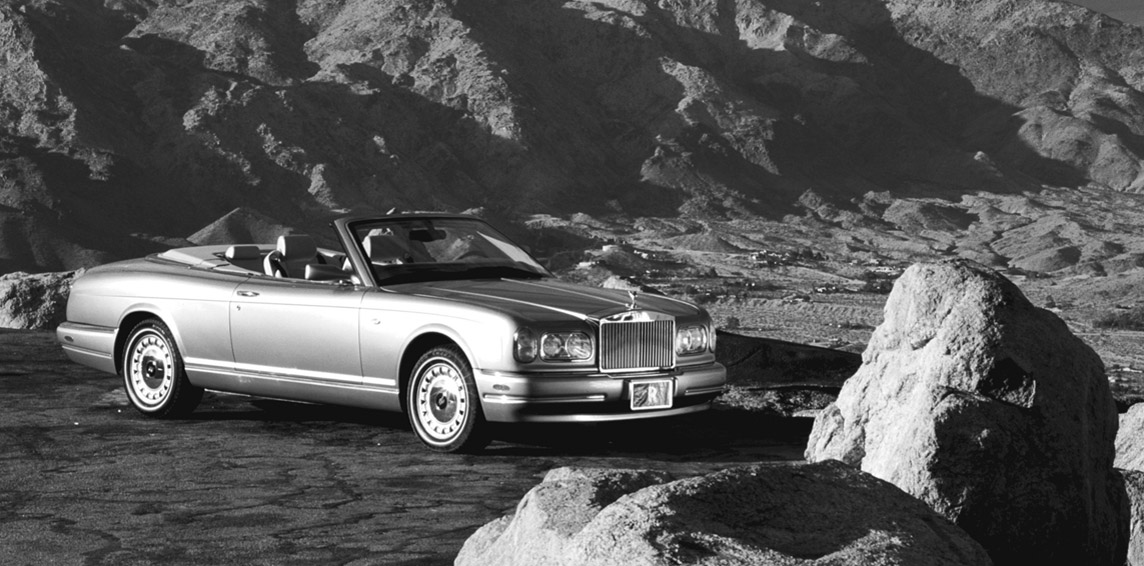 |
The new Corniche shared many styling cues with the Silver Seraph, but used the familiar V8. Thanks to its greater torque, the Rolls-Royce V8 was felt better suited to the wafting Corniche. This was the last Rolls-Royce to retain the long-standing heritage of the great V8 engine, and thus also the last Rolls-Royce to represent the truly British soul and sense of perfection that was the hallmark of its forefathers. All of the fine motor cars presented here are treasured classics in their own right, and are true icons at the pinnacle of automotive history. |
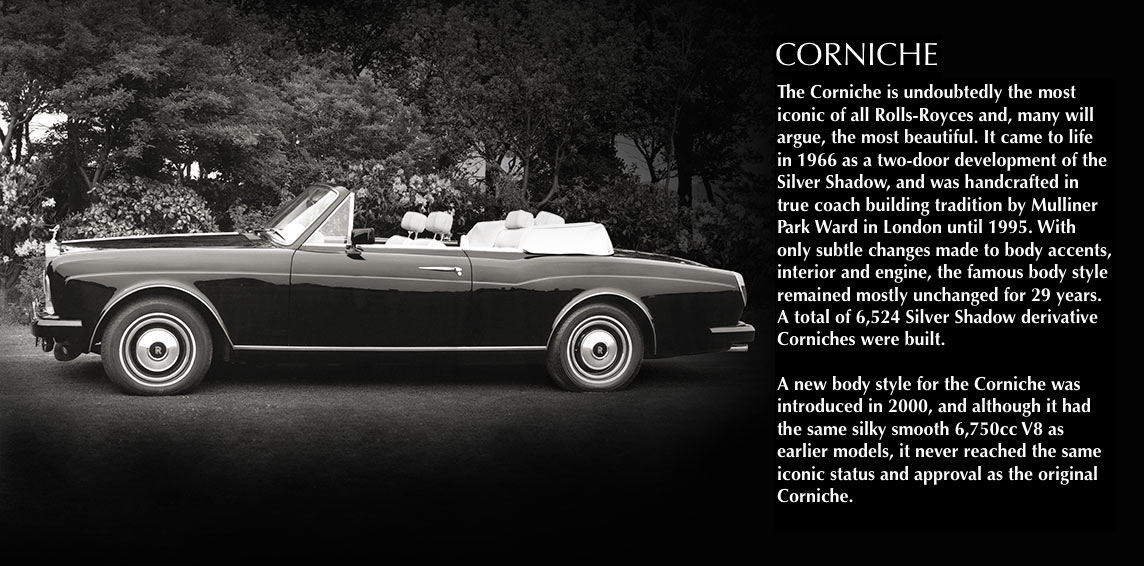 |